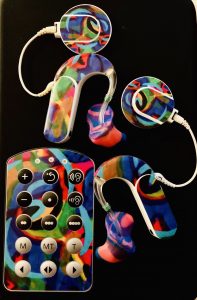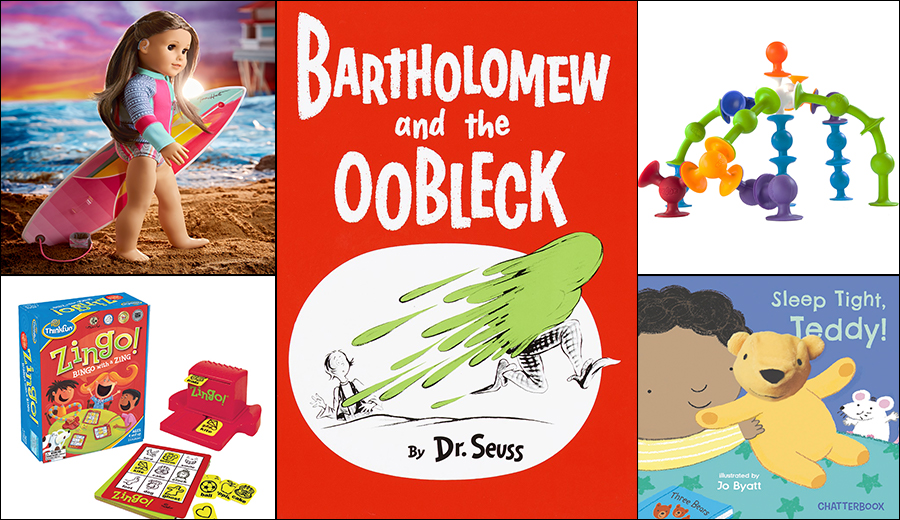Written By: Sara Walsh
Gretchen Overton’s daughter is 2 ½-years-old and knows more than a thousand words—the average 2-year-old knows about 300. This Christmas will be her daughter’s third with hearing devices, too.
Overton attributes her daughter’s abundant word bank in part to her collection of toys, games, and books, which were given with an eye on enhancing her speech language and listening goals. Becky Clem, rehabilitation education coordinator at Cook Children’s Medical Center in Fort Worth, Texas emphasizes the importance of thinking carefully about holiday purchases: “With children with hearing loss, you need to exploit the listening. You need to be intentional.”
Speech-language therapists and parents of children suggest looking for gifts with the following characteristics for meaningful gift-giving in 2020:
Open-Ended: Choose gifts that promote open-ended play, ones that offer limitless possibilities for conversations and creations. Carrie Kovach, mom of Amelia (7) and Clara (2), who both have genetic hearing loss, chuckles about the amount of words one toy—such as a play bus, barn, kitchen or dollhouse—can offer: “It’s kind of funny, actually, how much language can come from one toy!” Kovach explains how she meaningfully integrates language by, for example, teaching directions words, such as “put the pig under the fence and over the fence.” Clara’s attention is held the most by her play kitchen and food. Now, after a lot of repetitive play with others, Kovach overhears her cutting up an orange or making ice-cream cones, using all the same vocabulary the family does.
Natural sounds: Opt for toys with natural sounds rather than battery operated ones, which experts say narrow and fixate attention. Laura Straka, speech-language pathologist at Child’s Voice in Wood Dale and Chicago, Illinois advises against toys with artificial noise: “It’s better for parents or caregivers to narrate the language around the toy. With toys that talk to the child, the output will not be as clear as the parent’s voice. They also do not spark the imagination and only require the child to push a button.” She recommends musical instrument sets and books with embedded rattles or sound material.
Currently, on account of COVID, many children meet therapists virtually; therefore, having useful toys nearby is more essential. A useful gift in 2020 is a box containing objects and animals representing the Ling Six, which include the whole range of sounds to learn a language: “ahh” (airplane), “eee” (mouse), “ooo”(cow), “mmm”(ice cream), “shh” (shell), and “sss” (snake). This gift also doubles as a monitor for evaluating how well hearing devices are working.
Intrapersonal/Interpersonal: Select gifts that promote understanding and conversation about emotion and perspective—both in one’s self and in others. Theory of mind, the awareness and ability both to articulate and recognize feelings and thoughts in one’s self and the understanding that others may feel and think differently, is sometimes delayed in children who are deaf and hard of hearing on account of limited access to conversational language around them. Overton makes a priority of exposing her daughter to theory of mind concepts, making sure to emphasize and ask a lot of questions when they read and play together. For example, while reading a favorite, Bear Gives Thanks by Karma Wilson, she frequently pauses and asks, “What do you think Bear’s feeling right now? Why do you think he’s doing that?” She knows this engagement, where she draws attention to and encourages conversation about how characters are experiencing their lives, ultimately creates an essential foundation for perhaps the best gift her daughter will give and receive: friendship.
Open-ended Play Favorites:
Play-Doh Compound Corner Variety 6 Pack – Slime, Cloud, Krackle (two types), Stretch, Foam
Relatives of the more traditional Play-Doh, these novel textures offer a sensory experience without a specific objective or end. It’s up to the child to decide how they want to manipulate the material.
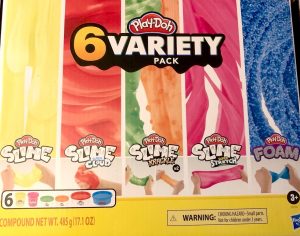
Oobleck and Bartholomew and the Oobleck by Dr. Seuss
For a homemade, highly economical, and even awe-inspiring alternative make Oobleck, recommends Gena Crane, developmental therapist at Oak Leyden Developmental Services in Oak Park, Illinois. The magical substance, neither liquid nor solid, is made solely from cornstarch (2 cups) and water (1 cup). For holiday spirit, add mint and green food coloring to the mixture! Pair the experience with a nod to the goo’s name origins: Dr. Seuss’ Bartholomew and the Oobleck.

FUNERICA Pretend Play Food Toys
Play possibilities abound with this 45-piece collection of cuttable fruits and vegetables and accompanying play knives, pots, pans, and cutting boards. The produce and protein also make a crunch sound from the Velcro when little hands cut it apart in preparation for the upcoming meal.
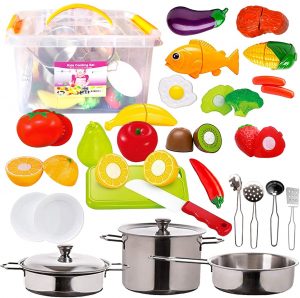
Natural Sound Favorites:
Poke-A-Dot: The Night Before Christmas
Combine counting the season’s delights of reindeers, stockings, and gingerbread with buttons that make satisfying clicks and pops similar to bubble wrap snapping. This gift offers an interactive experience while also teaching numbers in the countdown to Christmas.
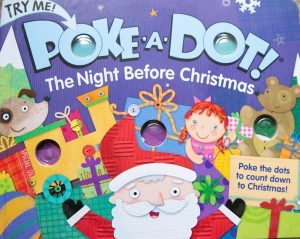
These silicone suction toys not only make what SLP Laura Straka describes as a “pleasing sound” when pulled off surfaces like high chairs and bath tubs, but they also check the box for open-ended play; the shapes combine to construct anything imagined, from bridge to octopus.
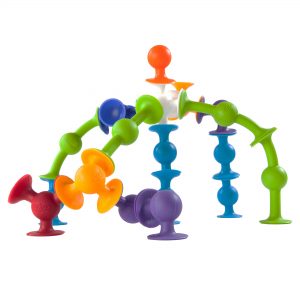
Intra/Interpersonal Favorites:
Joss Kendrick, American Girl Doll of 2020
Joss hails from Southern California and is the first doll with a hearing aid. Born deaf in one ear, with partial hearing in the other, she inspires with her joie de vivre as surfer, skateboarder, and cheerleader. A timely bonus to the gift: surfing makes its debut in the upcoming summer Olympics.

Sleep Tight, Teddy by Jo Byatt
This charming board book features a finger puppet bear and gentle rhyme. Although the toddler has a cochlear implant, the story is not about hearing loss and simply illustrates the child going about the evening routine, cozying up for a goodnight chat with teddy.
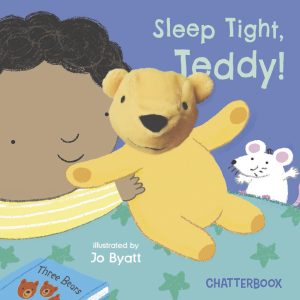
A twist on traditional Bingo, this rollicking game, including 24 sight words, improves speech and reading skills. Since the tiles offer both picture and word, pre-readers can join in, too. Watch your child exuberantly call out Zingo!
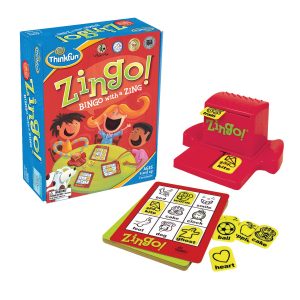
Now Hear This: Harper Soars With Her Magic Ears by Valli and Harper Gideons
The mother-daughter author duo shows how Harper, who was born with hearing loss, navigates her day and ultimately thrives, finding and sharing her distinctive voice both on the page and in life.
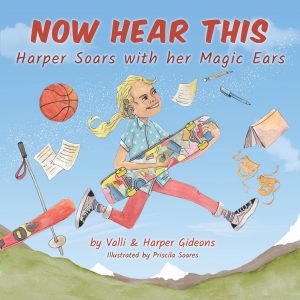
With over thousands of options, ranging from cartoon and anime characters to cityscapes and camouflage, gift these skins to add extra flair to hearing devices.
